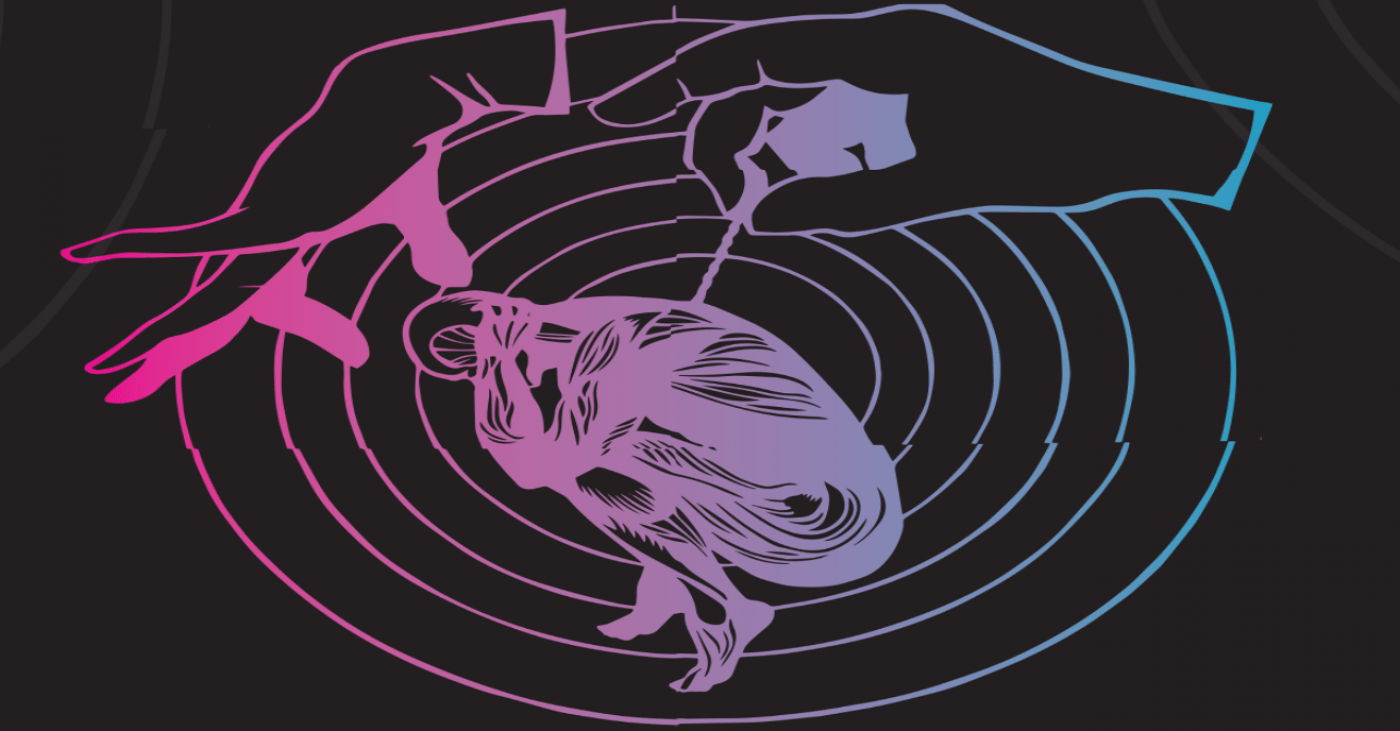Embodiment and Everyday Cyborgs: Technologies that alter Subjectivity
Media
Image

Blog content
Science fiction representations of robots, androids, and cyborgs in films and popular culture such as Robocop, The Terminator franchise or the ‘cybermen’ in Dr Who are portrayed as overtly strong and powerful; technological adaptations enhance them; and yet aspects of human identity such as emotions, empathy and compassion are lost. The underlying message of cybernetic implantation is clear: should a man’s (and the subject is often male) organic body be transplanted with bionic, prosthetic or cybernetic technology, he will lose the capacity for human emotion or empathy.
Ironically, these fictional and monstrous cyborg representations are far removed from the original description and meaning of the word ‘cyborg.’ The term is a portmanteau of the words ‘cybernetic’ (cyb) and ‘organism’ (org) and was first used by researchers in the sixties to describe the bodily modifications required to create a homeostatic feedback system for ‘men’ (again) to survive future space exploration (Clynes and Kline 1960). In her famous paper ‘The Cyborg Manifesto’ (1991), feminist philosopher and STS theorist Donna Haraway drew on the ‘cyborg’ to challenge these artificial dualisms between male and female, artificial and natural, and human and non-human animal, etc.
This made me wonder: how does it feel when the boundary between the cybernetic and the organism is collapsed? For example, xenotransplantation is a highly experimental non-human animal organ transplantation procedure that is currently experimenting with genetically modified pig organs. It has, as of the time of writing, not yet been successful - but if it were, would non-human animal characteristics be passed on to the recipient? Since the late 1960’s with the advent of human organ transplantation, accounts from organ transplant recipients emerged of how they felt they had inherited demographical, behavioural or personal characteristics from the organ donor.
In 2013-2018, my Wellcome-funded project, ‘Animal, Mechanical and Me: The Search for Replaceable Hearts’ (AM&ME) sought to explore what decisions young people would make if given the autonomy to choose their replacement organs. Given the hypothetical choice between human, non-human animal, mechanical, or 3-D bioprinted (e.g., made from a person’s own cells) replacement organs, which one would they choose? The survey of this mixed-method research design revealed that an overwhelming majority would choose human organs as their preference, especially organs that might one day be made from their own cells in the case of 3-D bioprinting. In contrast, non-human animal organs were extremely unpopular, with comments about xenotransplantation ranging from: “It would creep me out” and “It just feels strange” to “I don’t want a pig/animal inside me; I don’t wanna be part pig.” Interestingly, there was a certain level of ambivalence about mechanical devices from the study results: the option was more popular than non-human animal organs but less desirable than human ones.
Based on my research, I introduced the term ‘everyday cyborgs’ to describe individuals who live with cybernetic medical devices, e.g., implantable cardiac defibrillators (ICDs) which protect their hearts from sudden cardiac arrest. In discussions with them, the everyday cyborgs clearly demonstrated the ambivalence about creating techno-organic hybrids as found in the young people’s survey. For some everyday cyborgs, the challenges were in adjusting to a techno-organic hybridity and becoming acclimatised to living a life with a cybernetic device that was out with their control but inside their body. As we see, the reality of cybernetic life is very different to the fictionalised representations of cyborgs. Perhaps it might be possible to create alternative portrayals based on the experiences of everyday cyborgs as a foil to the more widely-known cyborg monsters?
Creative collaborations and collaboration with creatives was an artistic experiment that ran alongside the social science research of ‘AM&ME’. In 2014, I collaborated with one of my ICD participants, an everyday cyborg called Maggie, and the film-maker Ross Zieglemeier to co-produce a short film about Maggie’s emotional and turbulent cyborgisation process called ‘Maggie’s ICD story’. In 2015, driven by a desire to engage an audience rarely consulted with, I undertook an 18-month film production project with six young people supported by some of Scotland’s best animators, sound producers and creative artists (e.g., Screen Writing Edinburgh, Legs on Lens). The young people wrote, directed, filmed, animated and provided a musical score to their own gothic film ‘Broken Wings’, which allowed them to create their very own visions about xenotransplantation.
A ‘talking-heads’ documentary ‘Everyday Cyborgs and Humanimals’ brought together the process of making ‘Broken Wings’ with the other artistic outputs, such as ‘Maggie’s ICD Story’, ‘Electrifying Cyborg Heart,’ and ‘Everyday Cyborgs’, and premiered at the Filmhouse Cinema in Edinburgh in 2018. The overall project process was documented on the blog ‘Animal, Mechanical and Me: The Search for Replaceable Hearts’.
Since then, the concept of everyday cyborgs has become a source of inspiration for creative artists and broadcasters, offering new ways to explore the daily routine of a techno-organic hybrid life and what that might entail. During 2018/2019, the award-winning playwright Carla Grauls was commissioned by Audible Books to produce a short story and wrote the amazing audio play ‘Life Ever After’ deploying a “cyborg love story”. Another cyborg love story entitled ‘sur la comète’, (translation: ‘on the comet’) resulted when I collaborated with the author Naomi Salman in our ‘Uncanny Bodies’ (2020) edited collection.
In 2020, I was invited to write a science fiction cyborg story by the editors of the book ‘Modified: Living as a Cyborg’. My short story, based on the interviews I conducted with the everyday cyborgs, is entitled ‘When I First Saw Jesus, He Was A Cyborg’: it follows the cyborgisation process from the viewpoint of 3 main characters - Johnny, Jesus, and Shelley - and discusses the themes of cyborg sexism and the vulnerabilities that becoming cyborg can have. Perhaps creative experiments which emphasise authenticity and experience of the everyday cyborg will continue.
Despite all of this, I wanted to write a book that would bring together and explore ‘human, animal and mechanical’ whilst unpacking further the experience of our own embodiment. Do I have a body? Am I a body? Or is it somehow both, and if so, why, when and how? Embodiment and Everyday Cyborgs; Technologies that alter Subjectivity (2021) relates the narratives about how implantable technologies and transplantable organs are perceived or experienced by the people themselves. It opens up a wider discussion about how subjectivity (who we are) is affected by modifications to the body (what we are) even when these transformations are ones that go on inside our bodies. Chapter 1 ‘Ambiguous embodiment and organ transplantation’ and chapter 2 (Choosing between animal, mechanical and me’) are where I show the stories that accompany donated organs. Gender in particular, appears as a narrative, e.g. male donors are believed to donate organs that will contaminate the recipient with stereotypical male characteristics. These narratives are often dismissed by experts, but I find them intriguing because of what they say about how we experience our bodies. Our identity is not entirely separate to our bodies and therefore modifying the body means altering our identity. This theme is discussed further in chapter 2, in the results of a survey with young people and in focus groups; the findings demonstrate very strong preferences when given the choice between human, animal or mechanical. These findings show that the preferred option for repairing the human body is with an organ that came from the same human body (e.g. in the case of 3-D bioprinting), or interestingly, from a donor who is known or related. An organ from a pig placed into the human body is thought to have the potential to contaminate the recipient and make them like the pig - bringing in additional connotations of ‘dirty pigs’ for example - and was by far the least preferred option. A mechanical implant was preferred to that of a non-human animal, although some survey recipients were hesitant about a mechanical implant, as it was perceived as being unnatural and uncomfortable.
As we see, the everyday cyborg has nothing in common with the science fiction cyborg monster that we are more familiar with, apart from the fact that they are both likely to be male. This is partly why, in chapter 3 ‘The Need to Reclaim the Cyborg’ I address the need for an embodied approach to techno-science as well as a closer analysis of what this intimate techno-organic hybrid body means to subjectivity. Indeed, in the interviews I conducted with everyday cyborgs, in chapter 4 where we explores the relationship between everyday cyborgs with their ICD ‘cybernetic’ technology which is, a few of the everyday cyborgs, echoed this view about comfort and being unnatural. The everyday cyborg’s intimacy with the ICD device, literally inside the body, yet it is also unreachable; it is so close yet at the same time, so far away and therefore out of the control of the everyday cyborg. The everyday cyborg cannot reach it, and the ICD can emit shocks (both in terms of timing that it comes as a shock, and it terms of the electrical pain it can give). So even though the ICD has the potential to malfunction when it is functioning it can affect identity in the social world and their relationships with others. For some, the ICD is ‘humanised’ and become part of who the everyday cyborg is. The ‘shocks’ and the new techno-organic identity are ‘for’ the everyday cyborg. The ICD is there to assist, and not just to cause unexpected pain. For me, it was surprising to find that the ICD did not appear to represent a threat to subjectivity via contamination in the manner that a fleshy organ from a human or non-human animal might.
My work aims to give ‘everyday cyborgs’ a voice so they can share how difficult life with a cybernetic device inside your body is. We need more conversations about how the reliance on techno-scientific ‘fixes’ to medical problems are creating new ‘biomedical nemesis’ (Illich, 1976) where new vulnerabilities are being created.
Dr Gill Haddow is a Senior Lecturer in Science, Technology and Innovation Studies at the University of Edinburgh. Her book Embodiment and Everyday Cyborgs; Technologies that alter Subjectivity was funded by Wellcome and published by Manchester University Press in 2021. It is available open access here: https://www.manchesteropenhive.com/view/9781526114198/9781526114198.xml.
References
Clynes, M., E, and N. Kline, D., (1960). "Cyborgs and Space." Astronautics 5(September): 26-76.
Haraway, D. (1991). A Cyborg Manifesto: Science, Technology, and Socialist-Feminism in the Late Twentieth Century,. Simians, Cyborgs and Women: The Reinvention of Nature. New York, Routledge: 149-181.
Illich, I. (1976) “Limits to Medicine. Medical Nemesis: the Expropriation of Health”. London: Marion Boyars Publishers Ltd.
